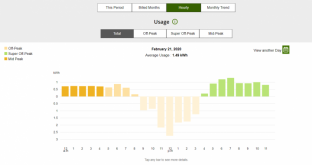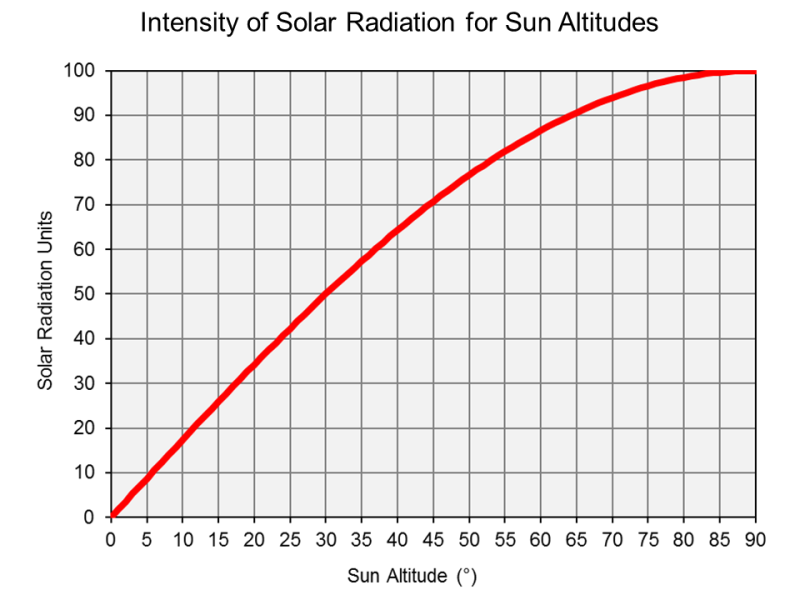I had to do this one more time.
Feb 25th 2020 and 2021 my Enphase solar produced almost the same power. It did taper off a bit more this year than last year, but the totals came out to 25.8 KWH this year vs 26.2 KWH last year. It also looks like the loads used in the house were very close. Here is the solar production.

Here is what the battery did this year.
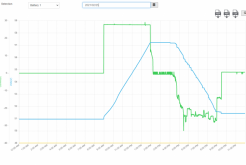
The charge current does not follow the extra solar, but I have it dialed in so that it doesn't pull more than the solar makes on any normal day. The output current in the evening is not as flat, because it actually is adjusting to supply the loads and only push the desired amount back out to the grid side. From 4 pm to 5 pm, you can see the current ramping up. This is because the XW-Pro is measure the power going back to the grid, and when the solar is still making more power than the loads in the output panel, the XW-Pro is not taking from the battery yet. As the solar falls off, it starts pulling battery power to feed the loads, and I have it pushing about 3 amps back to my main panel. It can't adjust for changing loads in the main panel. So from 5 pm to 9 pm it is supplying all the power for my backup loads panel, and adjusting it's current to follow with just my set amps back to the main. At 9 pm, it stops pushing back to the main panel, but it keeps running the loads in the backup panel until the batter hits my grid support cutoff. On that day it was set to 51.5 volts. I have moved it down to 51 even, and then it stayed running out past 10:30 pm. This is not selling any to the grid, just using my own power in the evening instead of the solar selling it during the day.
Here are the 2 days, one year apart, from SCE showing my usage.
Last year without the battery
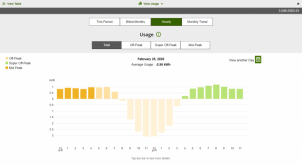
This year with the battery
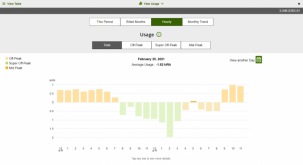
The first big thing to notice is that I am still selling quite a bit during the day when the sun is up. But instead of pushing up to 3,000 watts, it is only 1,500 watts until the battery topped out. Then the 2 pm hour shot up to 2,000 watts as the sun was just starting to go down. I should push the charge start time a little later. At 9 am, you can see it was just covering the charge power and the house load. In the 3 pm hour it flips. The solar alone was down to just 500 watts, but now the battery is starting to output and holding it to 1,000 watts. Then the entire 4 pm to 9 pm time, the battery was pushing out about 500 watts on top of running the whole house. Obviously we turned on some heavy load in the 5 PM hour, I think it may have been the welder for 10 minutes. But for the whole hour, we only ended up buying 0.1 KWH. For the totals, last year with solar only, we pushed out 2.58 KWHs, and this year, storing a bunch and using it in the evening, we pushed out only 1.92 KWHs. But a good portion of that 0.66 KWH difference is from the solar producing 0.4 KWH less, so that takes care of all but 0.26 KWH. Some of that was lost due to the efficiency of the AC to DC charging and DC back to AC discharging of the battery. On that day, I pushed 7.4 KWHs into the battery bank, and got most of it back out. Assuming the difference was the 0.26 KWHs, I am doing way better than expected. That is only a loss of 3.4%. I don't think it is quite that good, we must have used a bit less power this year, even with that spike in the 5 pm hour.
Doing this study has certainly proved that it is worth cycling the power to save a bit off of the peak rate power. At $0.43 per KWH I went from buying 4.2 KWH at peak time to selling them 1.7 KWHs. So 5.9 x 0.43 = $2.54 savings during the peak time, but I sold them less power at the $0.22 price before 4 pm. I figure I sold about 6 KWHs less, so $1.32 for a net gain of $1.22 per day. Still does not sound great, but x 30 days, is $36.60 a month, over $400 per year, towards paying for the battery bank. During the summer I will have to see how much I can shift with the A/C running. I am being careful to not sell them more than about 500 watts during the peak rate time. When it is 100F outside, and my A/C won't stop, I still want to try and zero the power meter in that time frame. The A/C compressor pulls 14 amps at 240 volt. I don't think I have quite enough battery to run that for the whole 5 hour window. 5 x 3,360 = 16,800 or 16.8 KWHs. My total battery bank capacity is rated at 18 KWHs, but I am only charging to 85% and down to 20%. That would mean I could move about 11 KWH's safely. Even if I can offset 1/2 of that 16.8 KWHs, it will be a big help. It does sometimes cycle off, depending on how crazy the weather is. I might be able to push it up to saving nearly $2 per day with the AC running, without adding any solar panels. I am looking at putting 4 panels on my garage roof. Trying to decide of I should get 4 more Enphase microinverters, or just go DC to my battery bank. 4 x 400 watt panels with a good charge controller, in the summer sun here, could give me about 9.6 KWHs straight into the battery bank each day. The XW-Pro would barely ever need to charge at all.



